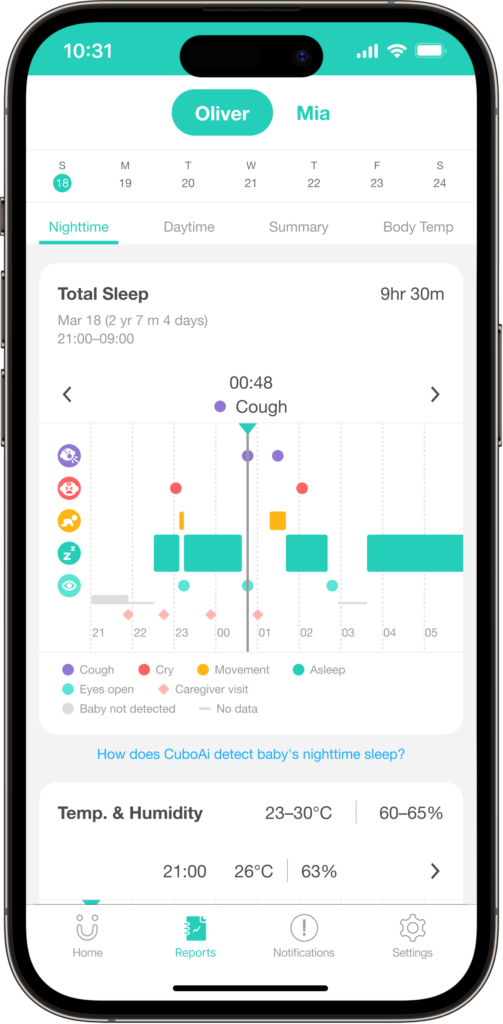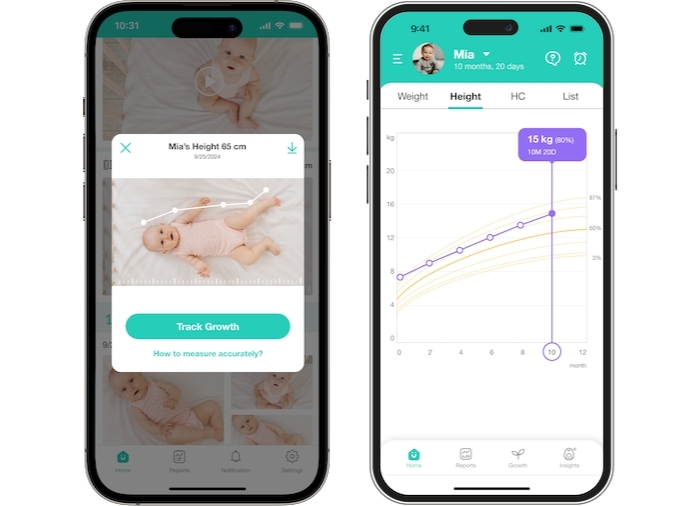A baby’s health is every parent’s top priority, in which height and weight are key indicators of a child’s overall well-being. By regularly tracking these metrics, parents not only monitor growth but also identify potential health concerns early on, ensuring peace of mind at every stage.
1. Why Are Height and Weight Important Indicators of Health?
From the fetal stage, weight serves as a key indicator of growth. During pregnancy, routine check-ups include monitoring the fetus’s size and weight to ensure the fetus develops well. After birth, a baby’s height and weight are measured immediately to make sure growth is on track.
As the baby grows, changes in height and weight directly reflect a baby’s nutritional intake, metabolic health, and immune status. Regular measurements provide parents with a clear understanding of their baby’s development.
2. Growth Stages and Key Factors Influencing Development
Newborn Stage: At birth, the average baby weighs approximately 3,300 grams (7.3 pounds) and measures about 50 cm (19.7 inches) in height.
Rapid Growth Phase:
- 5–6 months old: Weight doubles from birth
- 1 year old: Weight triples from birth, and height reaches approximately 75 cm (29.5 inches)
Monthly Growth Trends:
- 0–6 months: Height increases by around 2.5 cm (1 inch) per month
- 7–12 months: Height increases by about 1.3 cm (0.5 inches) per month
Key Influencing Factors:
- Nutrition: Balanced intake, including breastfeeding and solid food introduction.
- Sleep: Quality and sufficient sleep are critical for growth hormones. With CuboAi Smart Baby Monitor’s Sleep Analytics feature, you can automatically track your baby’s sleep, making it easier for parents to monitor their baby’s sleep patterns.

3. Exercise: Adequate physical activity and sun exposure support bone development.
4. Immunity: Avoiding frequent illnesses helps ensure steady growth.
3. How to Determine if Baby’s Growth is Normal
Parents can refer to the WHO (World Health Organization) Growth Standards to monitor their child’s development. These standards, based on global data, provide reliable benchmarks for assessing children’s growth, typically covering the range from the 3rd to the 97th percentile.
- Health Checkups and Vaccination Records: Pediatricians often use WHO growth charts during checkups to evaluate whether a child’s height, weight, and other measurements fall within the 3rd to 97th percentile range. Based on this, they offer tailored advice to support healthy development.
- Online Resources: The WHO website offers detailed growth standards and tools to help parents track their child’s growth milestones and percentile rankings.
Using Growth Charts Effectively:
Parents can track their baby’s growth by plotting measurements on the chart and checking trends over time. Digital tools like the “CuboAi Baby Diary & Tracker” App can simplify this process by visualizing data trends and highlighting potential concerns.
Download Now:
Click here to download the Baby Diary & Tracker App and easily generate personalized growth charts for quick insights.
4. Consistently Monitoring Your Baby’s Growth
Take Regular Measurements:
- Measure your baby’s height and weight monthly.
With the Growth Tracking feature on the CuboAi Smart Baby Monitor, you can automatically measure your baby’s height and monitor their development anytime.

- Use the same measuring device to avoid discrepancies.
- Take three measurements and calculate the average for accuracy.
Long-term Tracking:
Rather than single measurements, focus on the overall trend of the growth chart. If the curve deviates significantly, consult a pediatrician to identify and address any underlying issues.
Simplify Tracking with Tech:
The Baby Diary & Tracker App offers long-term data recording and analysis, helping parents stay on top of their baby’s health and easily share information with healthcare professionals.
Learn more and download the app now
5. Common Misconceptions and Expert Advice
- Myth 1: “Chubby babies grow out of it.”
Early obesity increases the risk of long-term health issues. Fat cells developed in the early years are harder to reduce later. - Myth 2: “Height is solely determined by genetics.”
While genetics play a role, nutrition, exercise, and sleep are equally important for height development. Ensure sufficient calcium intake to support bone growth.
Advice for Parents:
- Avoid unnecessary worry: Stay informed and monitor growth data regularly, but don’t overthink it.
- Promote healthy habits: Balanced nutrition, quality sleep, and good hygiene reduce risks of illness and support steady growth.
- Seek professional help: If concerns arise, consult a pediatrician for expert guidance.
Conclusion
Every milestone in a baby’s growth journey is precious. By observing closely and making timely adjustments, parents can ensure their child grows healthily and happily. Tools like the Baby Diary & Tracker App make it easier to track and analyze data, reducing the hassle of manual notes.
Download the Baby Diary & Tracker App now and support your baby’s development every step of the way.
You’ve put this together so well, it’s a fantastic read.
I really appreciate the examples you included here.
You’ve made a complex topic seem so simple, thank you.